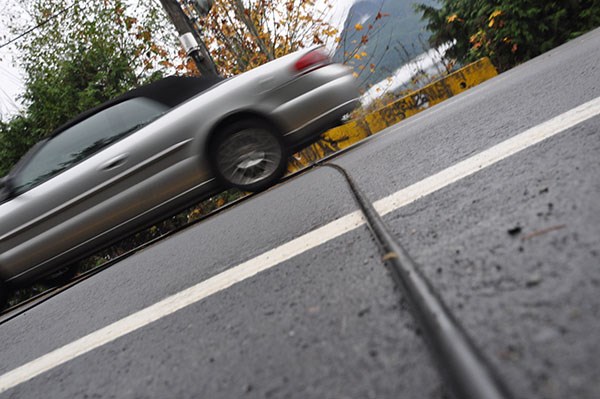Planners need to stop building for vehicles and start building for place-making.
That’s the message Simon Fraser University associate professor Dr. Sean Markey brought to the District of Squamish’s Select Committee on Transit Issues on Monday (April 14).
Squamish faces some big decisions in the next few years. Municipal staff are in the midst of a downtown revitalization initiative. At the same time, some large projects are slated for the area — such as the Squamish Oceanfront and the proposed Woodfibre natural gas plant. Squamish officials and residents need to think about what kind of community they want to live in as development forges ahead, said Markey, who is also an associate with the Centre of Sustainable Community Development.
“The type of planning you are doing now is incredibly important,” Markey said.
A lot of the challenges B.C. communities face today are a result of infrastructure built around one industry base, he said. In the 1980s, with the crash of the economy, that type of city planning hit a speed bump as mills closed and towns were left short on tax revenue.
“Some rural places have been struggling ever since,” Markey said.
While the provincial government is still heavily reliant on resource-based industries, local governments need to diversify their economic base, Markey said. Within a community, all aspects, including a diverse economy, should be looked at together rather than segmented, he added. That isn’t easy. Government departments are often divided into their own sectors, Markey said.
Squamish has one big thing going for it, he noted. People who live here love the community. Residents’ attachment to their hometown is a powerful force in shaping the community’s direction, Markey said.
Transit and land use have to be tied together, said Stephan Rees, a blogger and former senior planner with the Greater Vancouver Transport Authority. Squamish’s downtown is set up in a grid system, which makes it easy from pedestrians to get to where they’re going, but creates congestion for vehicles. This isn’t necessarily a bad thing, Rees said, noting the more infrastructure built for automobiles, the more vehicles will hit the road.
“If you want to reduce the amount of vehicle movement, you put things closer together because people want to walk,” he said.
The municipal transit committee meetings are open to the public. For more information visit www.squamish.ca.




